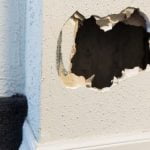In today’s world, the importance of energy efficiency cannot be overstated. With growing concerns about climate change and the depletion of natural resources, it has become imperative for individuals to take action in reducing their carbon footprint. One way to contribute to a more sustainable future is through energy efficient home improvements. By making simple upgrades and modifications to our homes, we can not only reduce our environmental impact but also save money on energy bills.
The Energy Efficient Home Improvement Credit is an incentive program that encourages homeowners to make energy-saving upgrades by providing them with tax benefits. This credit allows eligible individuals to claim a portion of the costs incurred in making qualifying improvements to their homes. By taking advantage of this credit, homeowners can significantly offset the initial expenses associated with these upgrades.
Understanding and utilizing the Energy Efficient Home Improvement Credit is crucial for those looking to make environmentally friendly changes in their homes while reaping the financial benefits. This article will provide a comprehensive guide on how to report this credit and ensure that your energy-efficient home improvements are eligible for the tax benefits. Additionally, it will address common concerns and pitfalls to avoid when filing for the credit.
By promoting energy efficiency and providing incentives for sustainable practices, we can collectively work towards creating a greener future. So let’s dive into the details of the Energy Efficient Home Improvement Credit, learn how it works, who is eligible, what improvements qualify, and where and how to report it – all with the aim of empowering homeowners like you to embrace energy efficiency in your homes while saving money in the process.
Understanding the Energy Efficient Home Improvement Credit
One of the key components of promoting energy efficiency is through incentivizing homeowners to make energy-efficient improvements to their homes. The Energy Efficient Home Improvement Credit is a tax credit that provides financial relief to individuals who invest in making their homes more energy-efficient. This section will provide an understanding of what the credit is and why it is important.
The Energy Efficient Home Improvement Credit, sometimes referred to as the Residential Energy Property Credit, was introduced as part of the American Recovery and Reinvestment Act in 2009. Its goal is to encourage homeowners to take actions that reduce their energy consumption and lower their carbon footprint. By offering a tax credit, the government aims to support and reward homeowners for making environmentally-friendly choices.
This credit is available for various home improvements such as adding insulation, installing energy-efficient windows or doors, upgrading heating and cooling systems, or installing eligible renewable energy systems like solar panels or wind turbines. The amount of credit available varies depending on the type of improvement made, with certain improvements having specific credit limits.
Overall, this tax credit not only benefits homeowners by reducing their tax liability but also contributes to overall efforts in achieving sustainability and combating climate change. Understanding the importance of this credit can help homeowners make informed decisions about their home improvement projects and contribute towards a greener future.
Eligibility Criteria
The Energy Efficient Home Improvement Credit offers homeowners a tax incentive for making energy-efficient upgrades to their homes. However, not everyone is eligible to claim this credit. In order to qualify, individuals must meet certain criteria set by the Internal Revenue Service (IRS).
Homeowners
First and foremost, only homeowners are eligible for the Energy Efficient Home Improvement Credit. This means that if you are renting a property or living in an apartment, you will not be able to claim this credit. The credit is specifically designed to encourage homeownership and assist individuals in making energy-efficiency improvements to their own properties.
Primary Residences
In addition to being a homeowner, the Energy Efficient Home Improvement Credit can only be claimed for improvements made to your primary residence. This means that any upgrades made to second homes or vacation properties will not qualify for this credit. The IRS defines your primary residence as the home you live in most of the time throughout the year.
Qualified Improvements
Another important criterion for eligibility is ensuring that your home improvements meet the qualifications outlined by the IRS. Not all energy-efficient upgrades will automatically qualify for this credit. It’s crucial to carefully review the guidelines provided by the IRS and consult with a tax professional if needed, to determine whether your specific improvement project meets the necessary requirements.
Overall, it’s essential for homeowners to understand who can claim the Energy Efficient Home Improvement Credit before embarking on any energy-efficient upgrades. By meeting these eligibility criteria, individuals can take advantage of potential tax benefits while simultaneously reducing their environmental impact and saving on energy costs.
How to Qualify for the Credit
To qualify for the Energy Efficient Home Improvement Credit, it is important to follow certain steps to ensure that your home improvements are eligible. The first step is to determine which upgrades or improvements on your home will qualify for the credit. The IRS provides a detailed list of qualifying improvements, such as installing energy-efficient windows, doors, insulation, and certain roofing materials.
Once you have identified the qualifying improvements you want to make, it is crucial to keep all relevant documentation and receipts. These documents will serve as proof of the expenses incurred and the energy-efficiency measures implemented. This includes receipts for materials purchased and any labor costs associated with the installation.
Next, it is important to bear in mind that there are specific energy efficiency standards that must be met in order for the improvement to be eligible for the credit. For instance, replacement windows must meet certain U-factor and Solar Heat Gain Coefficient (SHGC) requirements, while insulation must meet specific R-value ratings.
Furthermore, it is essential to have a tax preparer or accountant who is well-versed in tax credits and deductions assist you when filing your taxes. They can guide you through the process and ensure that all necessary forms are filled out accurately and completely. It may also be beneficial to consult resources provided by organizations such as ENERGY STAR or local utility companies for further guidance on qualifying improvements and proper documentation.
By following these steps and taking the necessary precautions, homeowners can ensure that their home improvements are eligible for the Energy Efficient Home Improvement Credit. Taking advantage of this credit not only helps save money on energy bills but also contributes towards reducing our overall carbon footprint by promoting sustainable practices in homes across the nation.
Identifying Qualifying Home Improvements
Understanding Qualifying Home Improvements
To claim the Energy Efficient Home Improvement Credit, it is crucial to identify which home improvements qualify for this tax benefit. Qualifying home improvements are those that meet specific energy efficiency criteria set by the government. These improvements aim to reduce energy consumption and promote sustainability. By identifying these qualifying improvements, homeowners can ensure that their projects will be eligible for the credit.
Energy Efficient Appliances
One of the most common types of qualifying home improvements is the installation of energy-efficient appliances. These include refrigerators, dishwashers, washing machines, and air conditioning units. When shopping for these appliances, look for products labeled with ENERGY STAR® certification, as they meet strict energy efficiency guidelines.
Another important improvement to consider is upgrading your heating and cooling systems. Replacing an old furnace or air conditioner with a more efficient one can significantly reduce your energy usage and qualify you for the credit. Ensure that these systems have a high Seasonal Energy Efficiency Ratio (SEER) rating or Heating Seasonal Performance Factor (HSPF) to meet eligibility requirements.
Insulation and Windows
Improving insulation is another area where homeowners can make energy-efficient upgrades. Proper insulation helps maintain a comfortable temperature inside while reducing the need for excessive heating or cooling. Look for insulation materials such as fiberglass batts, blown-in cellulose, or spray foam insulation that meet the recommended R-value standards outlined in local building codes.
Replacing old windows with high-efficiency windows also qualifies as a home improvement under this tax credit. Windows with multiple panes and low-emissivity coatings help prevent heat gain in summer and heat loss in winter. They effectively insulate your home and contribute to an overall reduction in energy consumption.
Solar Panels and Renewable Energy Systems
Another significant category of qualifying home improvements includes renewable energy systems such as solar panels, wind turbines, and geothermal heat pumps. These systems generate clean energy from renewable sources and can greatly reduce or eliminate your reliance on traditional energy sources. Ensure that any equipment you install is certified and meets the necessary efficiency standards to claim the credit.
By identifying these qualifying home improvements, homeowners can make informed decisions when planning their home improvement projects. Understanding which improvements are eligible for the Energy Efficient Home Improvement Credit ensures that you maximize your potential tax benefits while contributing to a more sustainable future.
Reporting the Energy Efficient Home Improvement Credit
One of the most important steps in taking advantage of the Energy Efficient Home Improvement Credit is reporting it properly. To ensure that you receive the tax benefits you deserve, it is crucial to know where and how to file for this credit.
The first step in reporting the Energy Efficient Home Improvement Credit is to gather all the necessary documentation. This includes receipts, invoices, and any other proof of payment for the qualifying home improvements you made. It is important to keep these documents organized and easily accessible for when you need to file your taxes.
When it comes to actually filing for the credit, you will need to use IRS Form 5695 – Residential Energy Credits. This form allows you to calculate and claim your energy efficient home improvement credit. You can find this form on the IRS website or at your local IRS office.
Once you have completed Form 5695, you will need to include it with your federal tax return. This form should be submitted along with either Form 1040 or Form 1040-SR, depending on which one applies to your situation. Make sure to double-check all the information before submitting your tax return to avoid any mistakes or delays in receiving your credit.
In addition to filing for the Energy Efficient Home Improvement Credit on your federal tax return, some states also offer their own tax credits or incentives for energy efficient home improvements. Be sure to check with your state’s taxation department or consult a tax professional to see if there are any additional forms or information required when filing at the state level.
Overall, reporting the Energy Efficient Home Improvement Credit involves gathering the necessary documentation, completing IRS Form 5695 accurately, and including it with your federal tax return. By following these guidelines, you can ensure that you properly report and claim this credit, maximizing your potential savings on energy-efficient home improvements.
| IRS Forms | Description |
|---|---|
| Form 5695 | A form for calculating and claiming residential energy credits. |
| Form 1040 | The standard individual income tax return form. |
| Form 1040-SR | An alternative simplified tax return form for seniors. |
Potential Savings
One of the most enticing aspects of the Energy Efficient Home Improvement Credit is the potential tax benefits that homeowners can receive. By making energy-efficient improvements to their homes, individuals can not only lower their energy bills but also enjoy significant savings on their taxes.
To calculate the potential tax benefits of the credit, homeowners need to determine the total amount spent on qualifying home improvements. The IRS provides specific guidelines and criteria for eligible improvements, which can be found in Publication 523. It is important to have proper documentation and receipts for all expenses related to these improvements.
Once the total amount spent on qualifying improvements has been determined, homeowners can then calculate their potential tax credits. The Energy Efficient Home Improvement Credit offers a credit of up to 30% of the cost of eligible improvements, with a maximum credit limit of $500 per household. This means that if a homeowner spends $5,000 on qualifying improvements, they may be eligible for a tax credit of up to $1,500.
It is important to note that the credit is non-refundable, meaning it cannot exceed your total tax liability. However, any unused portion of the credit can be carried forward to future years. This allows homeowners who may not have enough tax liability in one year to still benefit from the credit in subsequent years.
| Total Amount Spent on Qualifying Improvements | Potential Tax Credit |
|---|---|
| $5,000 | $1,500 |
| $10,000 | $3,000 |
| $15,000 | $4,500 |
By taking advantage of the Energy Efficient Home Improvement Credit, homeowners can not only make their homes more energy efficient but also save money in the process. It is important to consult with a tax professional or refer to the IRS guidelines to ensure that you are properly calculating and claiming your potential tax benefits.
Common Pitfalls to Avoid
When it comes to filing for the Energy Efficient Home Improvement Credit, there are some common pitfalls that homeowners should be aware of and avoid. These mistakes can lead to delays in receiving the credit or even disqualification, so it’s important to familiarize yourself with these pitfalls and steer clear of them. Here are some key mistakes to avoid when filing for the credit:
- Failing to keep proper documentation: One of the most important things you can do when claiming the Energy Efficient Home Improvement Credit is to keep all necessary documentation. This includes receipts, invoices, and any other proof of purchase or installation. Without proper documentation, you may not be able to substantiate your claim, leading to denial of the credit.
- Not meeting eligibility criteria: Before proceeding with home improvements, it’s vital to ensure that you meet all the eligibility criteria for claiming the credit. Some key factors include using qualified energy-efficient products and having them installed in either your primary residence or a vacation home if it meets certain criteria. Failure to meet these requirements can result in disqualification from claiming the credit.
- Ineligible expenses: It’s crucial to understand what types of home improvements qualify for the energy-efficient credit. Not all expenses related to improving energy efficiency in your home will be eligible for this tax credit. Make sure you review the IRS guidelines or consult a tax professional to determine which expenses qualify before undertaking any projects.
By avoiding these common pitfalls, you can ensure a smooth process when filing for the Energy Efficient Home Improvement Credit. Remember to keep all necessary documentation, thoroughly understand and meet eligibility criteria, and verify that your expenses are eligible before claiming the credit.
Frequently Asked Questions
As you navigate through the process of claiming the Energy Efficient Home Improvement Credit, you may have some common concerns or doubts. In this section, we will address frequently asked questions to provide clarity and help you make informed decisions.
1. Can I claim the Energy Efficient Home Improvement Credit even if I do not owe any taxes?
Yes, you can still claim the credit even if you do not owe any taxes. This is known as a non-refundable tax credit, which means it can reduce your tax liability to zero but cannot result in a refund.
2. Is there a maximum amount I can claim for the Energy Efficient Home Improvement Credit?
Yes, there is a maximum lifetime credit limit of $500 for all qualified energy improvements combined. However, certain improvements such as solar electric systems and geothermal heat pumps have higher maximum credit limits.
3. Are all energy-efficient home improvements eligible for the credit?
No, not all energy-efficient home improvements are eligible for the credit. To qualify, the improvement must meet specific energy efficiency criteria established by the IRS. It is important to review and understand these criteria before proceeding with your home improvement project.
4. Can I claim the Energy Efficient Home Improvement Credit for rental properties?
No, unfortunately, this credit is only available for improvements done on your primary residence. Rental properties are not eligible for this tax benefit.
5. Can I combine other tax incentives or credits with the Energy Efficient Home Improvement Credit?
Yes, in some cases you may be able to combine other tax incentives or credits with the Energy Efficient Home Improvement Credit. However, it is important to consult with a tax professional or refer to IRS guidelines to fully understand how different credits and incentives can be used together.
By addressing these frequently asked questions, we hope to provide clarity and help you navigate the process of claiming the Energy Efficient Home Improvement Credit successfully. If you have any further doubts or concerns, it is always recommended to seek professional tax advice or refer to IRS resources for accurate and up-to-date information.
Conclusion
In conclusion, the future of energy efficiency is bright, and the importance of home improvements cannot be overstated. The Energy Efficient Home Improvement Credit serves as a powerful incentive for homeowners to make environmentally friendly upgrades to their homes, while also providing significant tax benefits. By taking advantage of this credit, individuals can not only save money on their tax bills but also contribute to a more sustainable future.
As more and more people become aware of the impact of their energy consumption on the environment, the demand for energy-efficient homes and appliances is expected to increase. Additionally, with advancements in technology and the availability of cost-effective solutions, making energy-efficient home improvements has never been easier or more accessible.
It is important for homeowners to understand the eligibility criteria and qualification process to ensure that their home improvements are eligible for the Energy Efficient Home Improvement Credit. By consulting a tax professional or referring to reputable sources, individuals can avoid common pitfalls and mistakes when filing for the credit.
Frequently Asked Questions
What is the energy-efficient home improvement credit for tax year 2023?
The energy-efficient home improvement credit for tax year 2023 refers to a tax incentive provided by the government to promote energy conservation and environmentally-friendly improvements made to one’s home. However, as of now, specific details about the credit for that particular year have not been released, since it is still in the future.
It is essential to stay updated on any changes or updates from the IRS regarding this tax credit closer to tax year 2023.
What IRS form for home energy credit?
The IRS form used for claiming the home energy credit is Form 5695, “Residential Energy Credits.” This form allows homeowners to report their eligible expenses related to energy-efficient improvements made to their primary residence or second home.
It includes various sections where individuals can provide details about their qualified expenditure, such as solar panels, energy-efficient windows, or geothermal heat pumps. Form 5695 also allows taxpayers to calculate the specific amount of tax credit they are eligible for based on their qualifying expenses.
Can you claim home improvements on your taxes?
Yes, it is possible to claim certain home improvements on your taxes if they meet specific criteria established by the IRS. Home improvements that qualify must be considered energy-efficient upgrades intended for residential properties. These can include insulation installation, installing qualified solar panels or wind turbines, upgrading heating and cooling systems with efficient alternatives, or adding energy-efficient windows and doors.
However, not all types of home improvements are eligible for tax deductions or credits. It is crucial to consult IRS guidelines and regulations or seek advice from a tax professional to determine which home improvements qualify for potential deductions or credits before claiming them on your taxes.

I’m thrilled to have you here as a part of the Remodeling Top community. This is where my journey as an architect and remodeling enthusiast intersects with your passion for transforming houses into dream homes.





